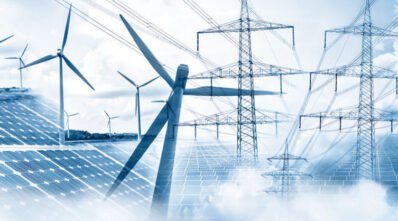Energy Management Systems are moving beyond monitoring
By EPR Magazine Editorial September 27, 2022 1:58 pm IST
By EPR Magazine Editorial September 27, 2022 1:58 pm IST

Energy management has become a buzzword across industries. India’s energy management systems industry is rapidly expanding and has the potential to become a significant source of revenue for the country. India’s emphasis on the energy sector has developed the region’s energy management systems. India’s energy management systems industry is rapidly expanding and has the potential to become a significant source of revenue for the country. India’s emphasis on the energy sector has helped to develop the region’s energy management systems. The rate of change in the electricity sector places a high value on resilient grids and other sources of flexibility, with India emerging as a global leader in battery storage.
India requires more flexibility in the operation of its power system than almost any other country on the planet. In the short term, India’s large grid and coal-fired power fleet meet the majority of the country’s flexibility requirements, supported by hydropower and gasfired capacity. Furthermore, the inefficiency of the power grid supply is forcing the government to implement energy management systems (EMS) to reduce transmission losses. Changing trends and energy requirements in the country have benefited the energy management systems industry. 
Timeframe for predictive and autonomous control lens
The timeframe for predictive and autonomous control lenses for supervisory control and data acquisition (SCADA) is determined by the amount of data available for research. The work also depends on how much utility they can incorporate into their systems and share with R&D. Some systems require three to five years of actual data to create a predictive algorithm. Furthermore, technology and methods of using technology are rapidly evolving. “It will happen; the technology will be there,” says Vikram Gandotra, Head, Utilities, Sales & Strategy, Siemens Limited. The process will be quick, and we will be able to make applications from this industry and a set of adjoining applications where everything happens simultaneously.”
Increasing the value
We have models of the entire grid in the electrical world. For example, PSSC software models the whole country’s transmission network in the transmission grid. If an unforeseen event occurs on the grid, how will it recover, and how will the grid function? The digital model of the electrical network is how it will be laid out optimally for new developing cities and new areas of cities, making it more reliable, economical, environmentally friendly, and aesthetically pleasing. It’s the kind of digital twin where experts can use models of a substation perhaps 1000 kilometres away to analyse what’s going on and guide the people there to operate more safely if there’s a problem.
Animesh Mishra, Head of Sales & Public Relations – Corporate Communication, Energy Efficiency Services Limited, “There are some drawbacks to the development and cycle of any digitisation that is taking place around the world in various aspects and various electronic, electrical, and energy sectors.” Many factors influence the smart energy industry, especially network technology. Policies regarding dual or multiple operators, which will necessitate an upgraded metering system, are still being developed. “Every piece of equipment that we are deploying there for the next decade, and every piece of equipment that is coming in today with technology, has at the very least some kind of inbuilt upgrade model”, he elaborates.
Infrastructure for EV charging stations
According to Gandotra, the infrastructure solution for EV charging stations depends on socio-economic factors. The factors include in what timeframe the person is charging their electric vehicle and where they would like to charge it. It depends on what it is like to charge it at a charging station or their office, or if it’s that they would prefer to exchange your battery use of a vehicle with you when it’s swapped, which is a possibility as compared to charging it. In the case of mass transit, like electric buses, the challenge is not about the point at which it will be charged, the place where it will be charged, and the time when it will be charged, as it is predictable.
But if there is an influx of large chargers, fast chargers, or large capacity chargers, then of course, it is like a problem of a large washing machine going anywhere in the city. Then, if thousands of such vehicles are rolling around the city, where will they, and what time will they decide to get attached to these fast chargers? This is the real problem. There is a need to study not only the electrical network but also other social and economic behaviour. Gandotra added that the distribution networks need more investment to cater to this load.
The demand for EV chargingSmart meter to meet efficiency goals 
Globally, standards and guidelines are available, with numerous options. However, the issue arises regarding energy management that will reach the consumer’s premise and interact with devices that affect the consumer’s daily life. According to Hem P Thukral, Smart Meter Expert, “We need to tweak the more general standards and guidelines because they add more depth to the power sector, and we need to define specific standards, applications, and guidelines for energy management, focusing on consumer applications. That is the path we must take as a country. It’s most likely a good action item for BIS to consider.”
In the coming years, more than 80 per cent of our country’s population will migrate to urban areas by 2047, the target date, with a low number of rural residents. As a result, consumption is affected by tariffs and vice versa. Today, even though the production costs of any power plant are around two rupees per kilowatt, the transactional cost of making that energy reaches a person is around seven rupees per kilowatt, with something added by the government.
If the focus is to make India 100 per cent electrified, in that case, the tariff is more on a consumption pattern. There are still places, like the northeast and northern parts of India, where power is supplied through diesel and petrol, not by the grid. So, the grid connectivity will be there once it is tested, and then you will have the energy storage. Primarily, the tariff is impacted more by our government’s policy of making it reach the last mile.
Data Security
For data security, one has to ensure that the system is not hacked and build a firewall for all the data stored. The government should also take care that data, which the data owner owns, is the consumer itself. They should take care of that by monitoring and protecting the set-up over a decade old.
Managing E-Waste
Currently, e-waste management in cuttingedge, India has several disadvantages like inadequate legislation, difficulty in incentivisation, health hazards due to informal recycling, poor awareness and reluctance on the part of the corporate to address the critical issues. “The impacts of the non-management of e-waste are intense when toxic materials enter the waste stream with no special precautions, creating adverse effects on the environment and human health; when economically valuable materials are dumped, resources are wasted, or unhealthy conditions are developed during informal recycling”, concludes Mishra.
We talked about how the energy management scenario is changing the energy industry. Based on our analysis of utilities and smart metres, we believe energy storage and battery package solutions can provide the most significant benefit to energy consumers. We are also convinced that monitoring will not suffice; we must extract value from data. This is where artificial intelligence, machine learning, and other novel technologies will come into play.
We use cookies to personalize your experience. By continuing to visit this website you agree to our Terms & Conditions, Privacy Policy and Cookie Policy.